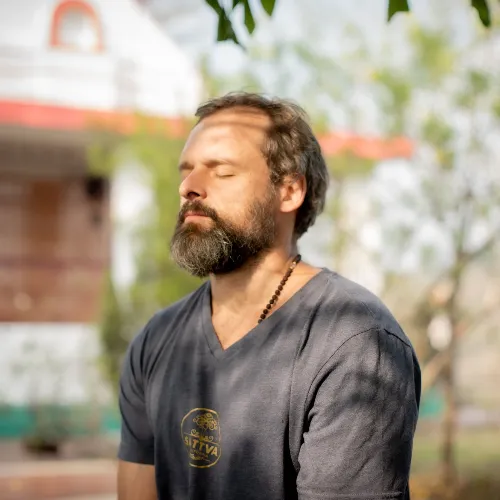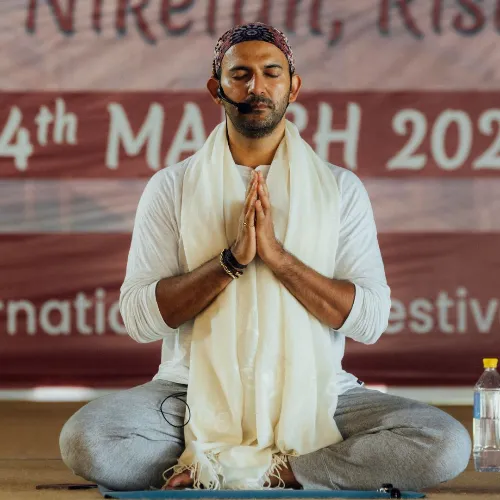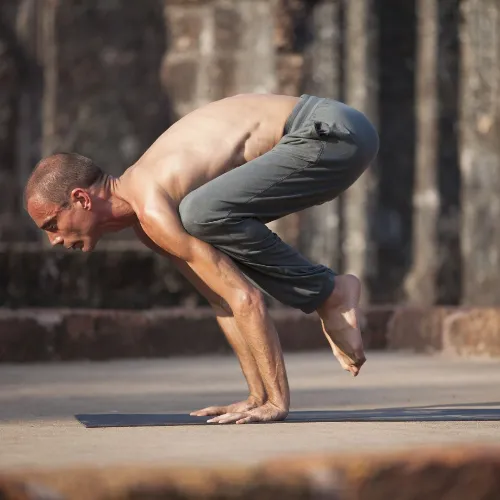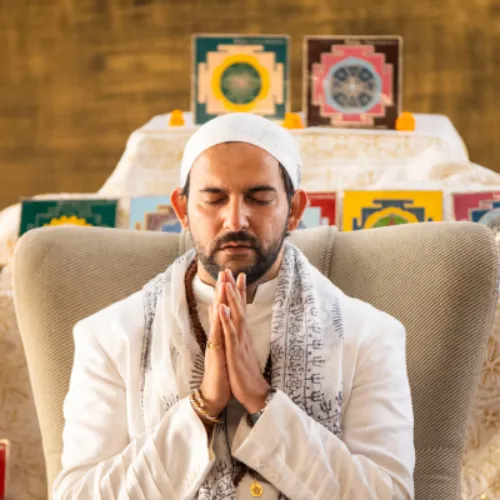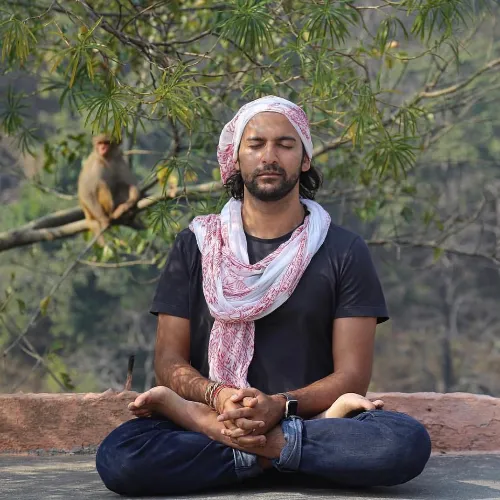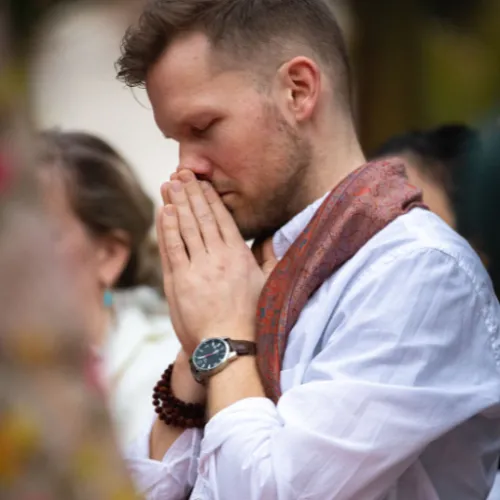


Yoga is often seen as a series of postures or breathing practices that promote physical flexibility and relaxation. But the heart of yoga goes far beyond the mat.
A true yogic lifestyle is about coming into harmony within ourselves, with others, and with the world around us.
It involves raising our energy so that we can live life from the level of the heart—listening from the heart, leading with the heart, and always returning to that clearing of love. So, if you are curious about how you can live a yogic lifestyle both on and off the mat, read on.
How to Live a Yogic Lifestyle
Living a yogic lifestyle means embracing yoga as more than just a physical practice—it’s a way of being. It’s about integrating the wisdom of yoga into every aspect of your life, from the way you treat yourself and others to how you nourish your body, mind, and soul.
By weaving yoga’s principles into your daily life, you cultivate inner peace, balance, and a deeper connection to the world around you. Below are key ways to embody a yogic way of life beyond the mat.
1. Embrace the Eight Limbs of Yoga
Patanjali’s "Eight Limbs of Yoga” offers a guide to living in alignment with life, and here it can be seen that the physical postures (asanas) practiced in yoga are just one aspect of the larger system.
To truly live a yogic lifestyle, it’s important to integrate all eight limbs into your daily life:
Yamas & Niyamas: These are qualities that it would be wise to cultivate.
The yamas include non-violence (ahimsa), truthfulness (satya), and non-attachment (aparigraha), and the niyamas include purity (saucha), contentment (santosha), and self-study (svadhyaya).
Asanas (physical postures): Asanas are the physical postures practiced in yoga. While they are the most well-known aspect of yoga, they’re meant to prepare the body for meditation, helping you sit comfortably and peacefully for long periods.
Pranayama (breathing practices): Breathwork is central to a yogic lifestyle because it connects the mind and body, cleanses your system, builds your energy, and helps you stay grounded and centered in the present moment.
And then there are the four aspects of meditation: Pratyahara, Dharana, Dhyana, and Samadhi.
Pratyahara (withdrawal of the senses) involves flowing your attention inwards.
Dharana (concentration) is an uninterrupted flow of attention that leads to Dhyana (meditation).
Dhyana (meditation) is a state of being. Pratyahara and Dharana are ‘doing’ states, but Dhyana just happens. The doing and the doer merge, and turiya, the transcendental state, is experienced. The transcendent state is when awareness is settling on itself, and there are stages within this.
Samadhi (unity): Samadhi means to unify, to be absorbed into the whole. Ego is separation. Samadhi is unity. Moving towards unity is moving towards love, moving with love, moving through love.
2. Live with Mindfulness & Presence
A yogic lifestyle involves cultivating presence in each moment, whether you're practicing asana, working, eating, or spending time with loved ones—being fully right here without judgment or distraction.
Start by practicing mindful breathing throughout your day. When you wake up in the morning, take a few conscious breaths before getting out of bed. As you move through your day, check in with yourself: how are you feeling physically, emotionally, mentally, and energetically? This awareness helps you respond to life rather than reacting out of habit or stress.
3. Nourish Your Body, Mind & Soul
A yogic lifestyle embraces balance in all aspects of life, including your diet, movement, and rest. Yoga teaches that the body is a temple, and it’s important to nourish it with wholesome food, mindful movement, and enough rest.
Eating Mindfully: A yogic approach to food emphasizes eating fresh, natural, and plant-based foods. It’s not just about what you eat but how you eat—taking time to appreciate each bite and honor the nourishment that the food provides. Eating with gratitude and presence can turn a simple meal into a meditation.
Physical Activity: Beyond asanas, yoga encourages you to move in ways that honor your body. Whether it’s through walking, swimming, dancing, or other forms of movement, a yogic lifestyle involves being mindful of how you care for and move your body.
Rest & Recovery: Rest is an important part of yoga, as it allows the body to repair and rejuvenate. Prioritize sleep and create routines that help you wind down. Yoga’s concept of savasana, or “corpse pose,” reminds us to find moments of stillness and relaxation to restore our energy.
4. Cultivate Compassion & Non-Violence
One of the core principles of yoga is ahimsa, or non-violence. This extends not only to our actions toward others but also to our thoughts and words. Practicing compassion means treating others with kindness, patience, and understanding, even when disagreements arise.
Living a yogic lifestyle means considering the impact of your actions on the world. It encourages you to speak and act in ways that promote peace, love, and understanding. It’s also important to extend compassion to yourself, allowing room for imperfections, mistakes, and growth.
5. Let Go of Attachment & Control
Yoga teaches us to release attachment to the outcomes of our actions. While it’s natural to have desires and goals, a yogic lifestyle involves detaching from the need to control everything. When you release attachment, you allow life to unfold more freely, without resistance.
This practice extends to material possessions, relationships, and even your own identity. The less attached you are to a fixed idea of who you are, what you have, or what you “should” be doing, the more peaceful and fluid your life becomes.
6. Live in Harmony with Nature
Nature is a vital part of the yogic lifestyle. Yoga teaches us that we are all connected, and living in harmony with nature is essential for balance and well-being. Whether it's through spending time outdoors, practicing yoga in nature, or being mindful of how we treat the environment, living a yogic life involves honoring the natural world.
Engage with nature: go for walks, meditate outside, or simply observe the beauty around you. This connection to the earth grounds you and reminds you of the interconnectedness of all life.
7. Commit to Personal Growth & Self-Awareness
A yogic lifestyle is a path of continuous growth. It’s about being aware of your thoughts, emotions, and actions. Whether it’s through journaling, self-reflection, or deepening your practice, always seek to expand your understanding of yourself and the world.
Yoga is a Way of Life
To truly live a yogic lifestyle is to integrate yoga’s teachings into every aspect of your being. It’s not just about what you do on the mat but how you approach life as a whole—your relationships, your work, your health, and your connection to the world around you.
By embodying the essence of yoga in every breath, step, and action, you create a life that is not only peaceful but truly fulfilling as you allow more of the truth of you to shine through.






















